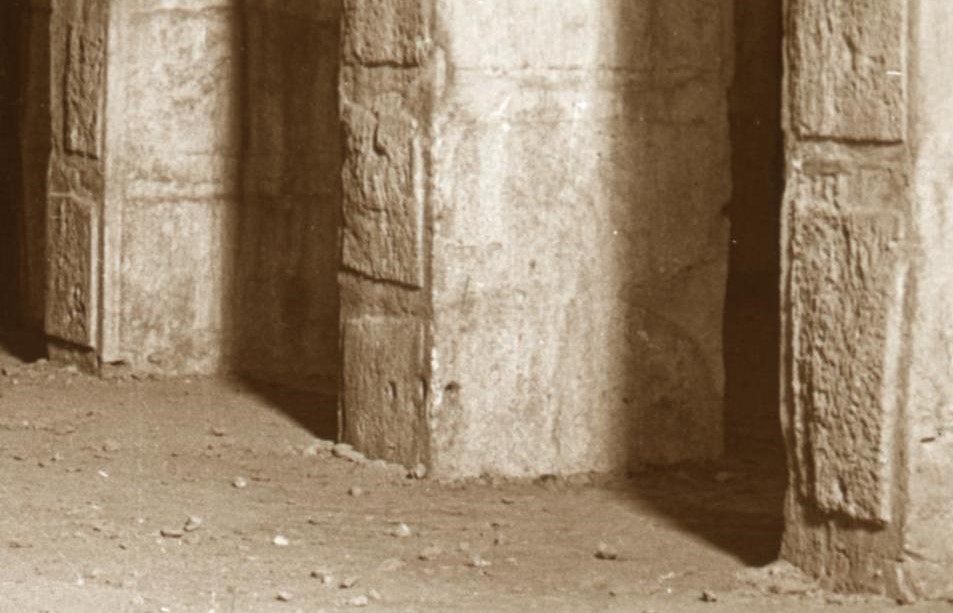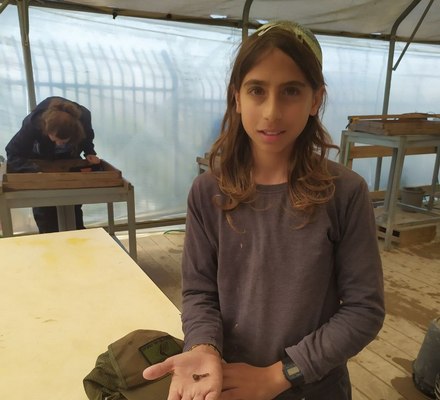Find and Finder of the Month: Yiftah Levi Found a Knights Templar Horseshoe Nail
For want of a nail the shoe was lost
For want of a shoe the horse was lost
For want of a horse the rider was lost
For want of a rider the battle was lost
For want of a battle the kingdom was lost
And all for the want of a horseshoe nail.
James Balwin’s version of a 13th Century proverb

About eight centuries have passed since this horseshoe nail was lost, and it was found by Yiftach Levi, 12, of Tekoa.
We can’t be certain how and why this particular nail was lost, and we’ll never know whether any battles were lost due to its absence. But there is one question we can tackle – how did it get here? Most of the soil that we sift comes from the entryway of the structure in the southeastern corner of the Temple Mount compound, known as Solomon’s Stables. Despite the fact that King Solomon never heard of this place, built quite a while after his time, it was indeed used as stables – during the time of the Crusades.
Europeans of the time saw the building at the southern end of the Temple Mount as Solomon’s Palace. And indeed, in the first years of the Kingdom of Jerusalem, here resided the Frankish ruler. But soon afterwards, the structure was granted to a newly formed military order, and so the Al-Aqsa Mosque became the headquarters of the new order named “The Poor Fellow-Soldiers of Christ and of the Temple of Solomon”, commonly known as the Knights Templar.
Of course, what’s a knight without a horse, and every horse needs a stable – and so, the ancient sub-floor structure next to “Solomon’s Palace” soon found itself called “Solomon’s Stables”. Till this day, one can see the holes drilled in the ancient pillars, where the horses were tied up, and, occasionally, we find another reminder of ancient Jerusalem’s Equestrian population.
The piles of débris removed from the Temple Mount during 1999–2000 came from three locations: The majority came from the large pit which was dug while creating a staircase into the northern façade of Solomon’s Stables. This, along with a smaller amount of débris which came out during renovations done within the ancient structure over the prior three years, were removed form the Temple Mount, and at first taken to the municipal garbage dump, but most of the material ended up being dumped in the nearby Kidron Valley. Several months later, leveling and gardening work just north of this area created additional piles of débris which were removed to a vacant lot. When we began our research, these piles were marked as “Area T”, while the piles at the Kidron were marked as “Area K” (with several sub-divisions).
To date, we’ve discovered approximately 350 horseshoe nails, many from crusader times. Most of these nails were discovered in Area K, which includes material taken out of Solomon’s Stables proper. As such, these nails are the most direct tangible evidence of the actual use of the structure during the Crusader period.



Discover more from The Temple Mount Sifting Project
Subscribe to get the latest posts sent to your email.












Leave a Reply
Want to join the discussion?Feel free to contribute!